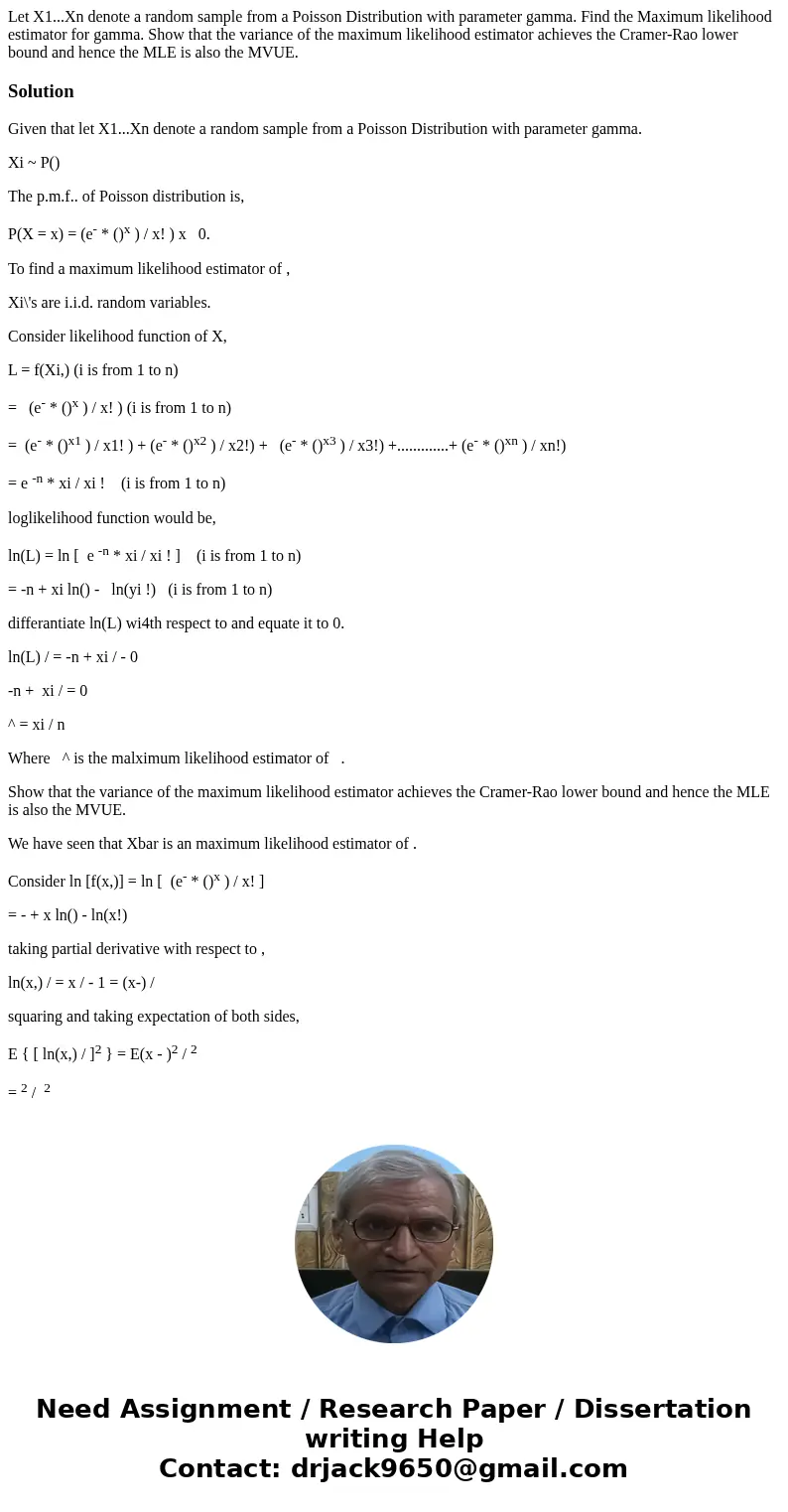Let X1Xn denote a random sample from a Poisson Distribution
Let X1...Xn denote a random sample from a Poisson Distribution with parameter gamma. Find the Maximum likelihood estimator for gamma. Show that the variance of the maximum likelihood estimator achieves the Cramer-Rao lower bound and hence the MLE is also the MVUE.
Solution
Given that let X1...Xn denote a random sample from a Poisson Distribution with parameter gamma.
Xi ~ P()
The p.m.f.. of Poisson distribution is,
P(X = x) = (e- * ()x ) / x! ) x 0.
To find a maximum likelihood estimator of ,
Xi\'s are i.i.d. random variables.
Consider likelihood function of X,
L = f(Xi,) (i is from 1 to n)
= (e- * ()x ) / x! ) (i is from 1 to n)
= (e- * ()x1 ) / x1! ) + (e- * ()x2 ) / x2!) + (e- * ()x3 ) / x3!) +.............+ (e- * ()xn ) / xn!)
= e -n * xi / xi ! (i is from 1 to n)
loglikelihood function would be,
ln(L) = ln [ e -n * xi / xi ! ] (i is from 1 to n)
= -n + xi ln() - ln(yi !) (i is from 1 to n)
differantiate ln(L) wi4th respect to and equate it to 0.
ln(L) / = -n + xi / - 0
-n + xi / = 0
^ = xi / n
Where ^ is the malximum likelihood estimator of .
Show that the variance of the maximum likelihood estimator achieves the Cramer-Rao lower bound and hence the MLE is also the MVUE.
We have seen that Xbar is an maximum likelihood estimator of .
Consider ln [f(x,)] = ln [ (e- * ()x ) / x! ]
= - + x ln() - ln(x!)
taking partial derivative with respect to ,
ln(x,) / = x / - 1 = (x-) /
squaring and taking expectation of both sides,
E { [ ln(x,) / ]2 } = E(x - )2 / 2
= 2 / 2
= / 2
= 1 /
We see that the Rao-Cramer lower bound is /n, which is the variance of Xbar . Hence Xbar is an efficient estimator of .

 Homework Sourse
Homework Sourse